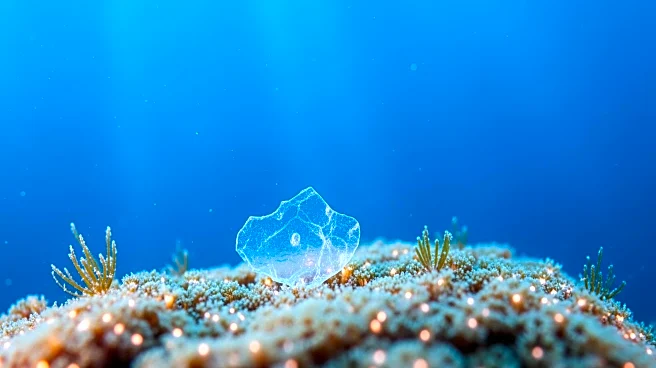What's Happening?
A study published in Nature details the development of a recycling technology for abnormally occurring oysters using molten alkali hydroxide. Researchers analyzed the chemical compositions of oyster shells
and meat, conducting thermogravimetric analyses to understand weight loss during pyrolysis. The introduction of hydroxide-based molten salts led to significant decomposition and dissolution of organic matter, transforming oyster shells into powder. The study explores the chemical mechanisms underlying the conversion of CaCO3 to Ca(OH)2, offering insights into sustainable recycling processes.
Why It's Important?
The development of a recycling technology for oysters addresses environmental concerns related to oyster waste and abnormal reproduction. By utilizing molten alkali hydroxide, the process efficiently decomposes organic matter and transforms oyster shells into usable materials. This advancement could contribute to sustainable waste management practices, reducing the environmental impact of oyster farming and processing. The study also highlights the potential for chemical recycling methods to address broader waste management challenges, offering a model for other industries.
What's Next?
Researchers may continue to refine the recycling technology, exploring its application to other types of shellfish and organic waste. The study's findings could inspire new approaches to waste management and recycling, potentially leading to more sustainable practices in the seafood industry. Stakeholders, including environmental organizations and industry leaders, may monitor these developments closely, as they offer solutions to pressing environmental challenges.
Beyond the Headlines
The study raises ethical considerations regarding the treatment of marine life and the impact of human activities on ecosystems. As industries seek to improve sustainability, the balance between economic interests and environmental preservation must be considered. The research also highlights the importance of interdisciplinary collaboration in addressing complex environmental issues, as it involves chemistry, biology, and environmental science.











